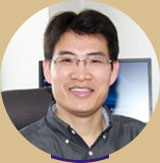

同济大学生命科学与技术学院院长 转化医学高等研究院副院长 教育部“长江学者”特聘教授、国家杰青获得者
1、体细胞重编程的分子机制
2、利用疾病特异iPS细胞研究疾病发生机制
3、哺乳动物早期胚胎发育的分子机制
1989-1993 山东农业大学动物科技学院学习并获学士学位。
1993-1996 中国农业大学动物科技学院学习并获硕士学位
1996-1999 中国科学院动物研究所生殖生物学国家重点实验室学习并获博士学位
1998-2000 美国布朗大学医学院,研究助理
2000-2002 英国罗斯林研究所基因表达与发育系做博士后研究
2002-2004 美国坦普尔大学菲尔斯癌症与分子生物学研究所做博士后研究
2004-2005 美国康涅狄格州大学再生生物学中心助理教授
2005-2011 北京生命科学研究所研究员
2011-2012 北京生命科学研究所高级研究员
2013- 同济大学生命科学与技术学院教授
主要学会兼职:
“干细胞研究”国家重大科学研究计划专家组成员
国家自然科学基金委第十四届专家评审组成员
国际干细胞学会(ISSCR)正式会员
国际生殖生物学会(SSR)正式会员
Cellular Reprogramming 编委
Cell Regeneration 编委
中国动物学会细胞及分子显微技术学会副理事长
中国干细胞学会理事
中国再生生物学会理事
中国干细胞工程技术学会理事
研究方向与主要学术成就:
主要利用体细胞核移植与诱导多能干细胞技术从事哺乳动物早期胚胎发育和体细胞重编程分子机制与干细胞研究。与中科院动物研究所周琪实验室在2009年分别独立报道了iPS小鼠的研究成果,从而在世界上首次证明了iPS细胞的真正多能性,被美国TIMES评为2009年世界十大医学突破之一。最近的研究证明DNA羟甲基化酶Tet1可以有效替代Oct4将体细胞重编程为iPS细胞并进一步阐释了其分子机制,而所形成的T-iPS细胞可以经四倍体补偿产生iPS小鼠并且没有肿瘤的发生。已经在包括Science, Nature Genetics, Cell Stem Cell, PNAS, Human Molecular Genetics, Stem Cells等国际知名学术期刊发表论文60余篇。